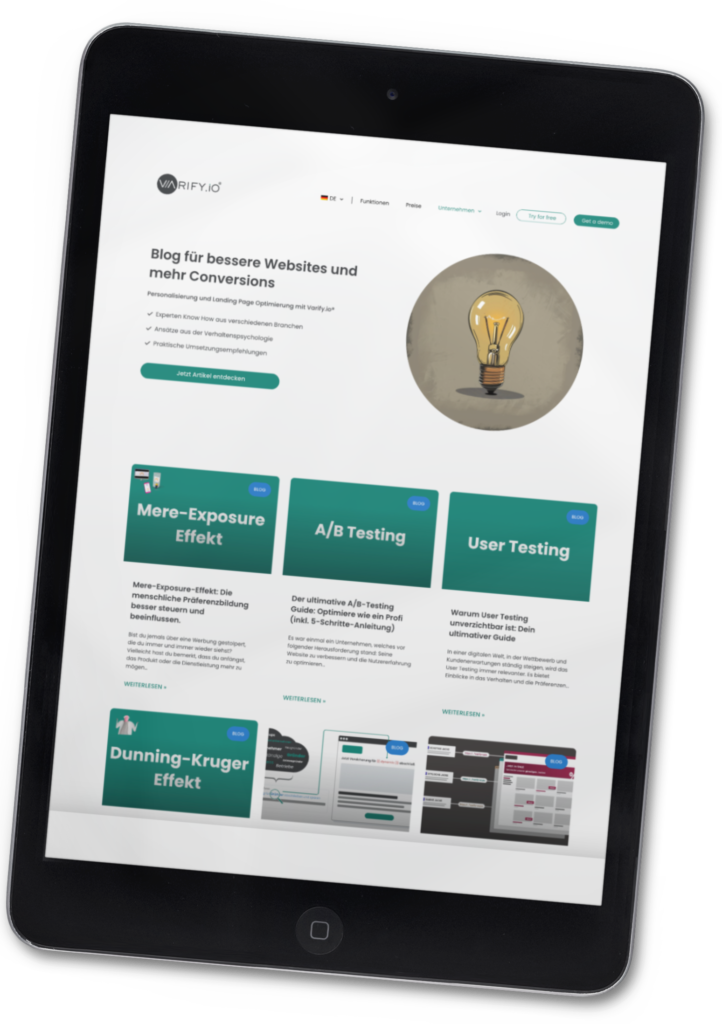The main goal of e-commerce is to get customers to buy products or services. An effective method to achieve this goal is the use of cognitive distortionsthat influence the behavior of customers.
One of these distortions is the Decoy Effect, which can help you increase your customers' perception of the value of your products and thus increase their willingness to buy.
In this article, you'll learn how to subtly use the Decoy Effect to optimize your conversion rate and increase your sales.
What is the Decoy Effect?
The decoy effect is a technique in marketing research where an additional product is introduced to influence customer behavior. This additional product is often referred to as a "decoy" and its purpose is to get customers to choose a particular product.
An example of the decoy effect might be when a company offers three different subscription plans. The most expensive plan has all features, the middle plan has some features, and the least expensive plan has only a few features. Here, a Decoy product can be introduced that is similarly priced to the middle plan but offers fewer features than the middle plan. This Decoy plan draws customers' attention to the middle plan, increasing the likelihood that they will choose it.
How can you use the Decoy Effect in your conversion optimization?
To use the Decoy Effect in your conversion optimization, you first need to understand how your customers behave. Analyze which products or services your customers buy and how they choose them. Based on this information, you can now develop a Decoy strategy.
One way to use the Decoy effect is to place a Decoy product next to the desired product. The decoy should have a higher price than the desired product, but have fewer features or lower quality. This will make the desired product appear more attractive in comparison.
Another option is to apply the Decoy effect to the price. For example, you can offer a more expensive price for the desired product, but accompanied by an additional free service or warranty. These additional services increase the perception of the value of the product and lead to a higher willingness to buy.
Note this before using the Decoy effect
Before using the Decoy Effect, carefully analyze your customers' behavior and develop an appropriate Decoy strategy based on that. Test different strategies and monitor the results to see which one works best. However, be aware that the Decoy Effect is not suitable for every company and every type of product.
It's important to carefully consider whether the Decoy Effect is appropriate for your marketing strategy and only use it when it makes sense.
Conclusion
The Decoy Effect can be a powerful way to optimize conversion rates and increase sales. By including an additional product or service, you can increase the perception of the value of your products and thus boost your customers' willingness to buy.
However, it is important to use the Decoy Effect subtly and integrate it into your marketing strategy in a natural way so as not to jeopardize your customers' trust.
